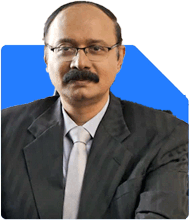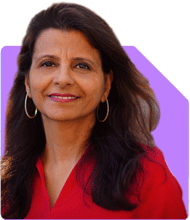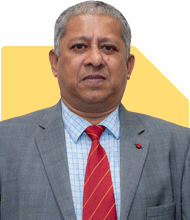37-Year-Old with 10 Cr+ Investments - How to Retire Early with 15 Cr?
Ramalingam Kalirajan |10071 Answers |Ask -Follow
Mutual Funds, Financial Planning Expert - Answered on Aug 08, 2024
He has an MBA in finance from the University of Madras and is a certified financial planner.
He is the director and chief financial planner at Holistic Investment, a Chennai-based firm that offers financial planning and wealth management advice.... more

Hello Team I am 37 year old, with a nett monthly take home of 5.8L. I have SIPs worth 1.5L per month. I have an outstanding MF portfolio of 1.02 Cr and a portfolio of 1.2Cr in stocks. I have 3 real estate properties worth 3.5 Cr and an outstanding loan of 1.5Cr. Please suggest a way forward to retire at 50 with a 15Cr corpus and to support monthly expenses of 1.5L.
Retirement Goal and Monthly Expenses
You aim to retire at 50 with a Rs 15 crores corpus and support monthly expenses of Rs 1.5 lakhs. This requires strategic planning and disciplined investing. Let’s break down the steps to achieve your goal.
Evaluating Your Current Investments
Mutual Funds (MFs)
Your MF portfolio is substantial and offers diversification.
Continue with your monthly SIPs. Increase them as your income grows.
Focus on a mix of equity and debt funds for growth and stability.
Stocks
Your stock portfolio is significant and can yield high returns.
Regularly review your portfolio. Consider consulting a Certified Financial Planner for stock selection and rebalancing.
Diversify across different sectors to mitigate risks.
Real Estate
Your properties are valuable but not liquid.
Avoid increasing real estate exposure further. Focus on more liquid investments.
Managing Debt
Outstanding Loan: Your loan of Rs 1.5 crores is a liability. Prioritize paying it off. This will reduce your financial burden and interest costs.
Debt Repayment Strategy: Allocate a portion of your income or profits from investments to repay the loan faster.
Investment Strategy for Retirement Corpus
To achieve a Rs 15 crore corpus by 50, consider the following strategies:
Increase SIP Contributions
Gradually increase your monthly SIPs. Aim for a higher allocation to equity funds for growth.
Use a mix of large-cap, mid-cap, and small-cap funds for diversification.
Invest in Debt Funds
Allocate a portion to debt funds for stability and regular income.
Debt funds can act as a cushion against market volatility.
Balanced Funds
Consider balanced funds that invest in both equity and debt.
They provide moderate growth with reduced risk.
Review and Rebalance
Regularly review your investment portfolio.
Rebalance your portfolio based on market conditions and your financial goals.
Insurance and Risk Management
Health Insurance
Ensure you have comprehensive health insurance for yourself and your family.
This will protect your savings from medical emergencies.
Life Insurance
Have adequate life insurance to secure your family’s financial future.
Opt for a term insurance plan for cost-effective coverage.
Tax Planning
Tax-efficient Investments
Continue investing in tax-saving instruments like ELSS mutual funds.
These provide tax benefits under Section 80C.
Capital Gains Management
Plan your investments to take advantage of long-term capital gains tax benefits.
Equity investments held for more than one year qualify for lower tax rates.
Emergency Fund
Building an Emergency Fund
Maintain an emergency fund covering 6-12 months of living expenses.
Park this fund in liquid mutual funds for easy access and reasonable returns.
Final Insights
Achieving a Rs 15 crore corpus by 50 requires disciplined investing and strategic planning. Increase your SIP contributions, diversify your investments, and focus on both growth and stability. Regularly review and rebalance your portfolio. Prioritize debt repayment and ensure adequate insurance coverage. Consult a Certified Financial Planner for personalized advice and guidance. With a structured approach, you can reach your retirement goals and enjoy financial security.
Best Regards,
K. Ramalingam, MBA, CFP,
Chief Financial Planner,
www.holisticinvestment.in
You may like to see similar questions and answers below
Ramalingam Kalirajan |10071 Answers |Ask -Follow
Mutual Funds, Financial Planning Expert - Answered on May 19, 2024
Ramalingam Kalirajan |10071 Answers |Ask -Follow
Mutual Funds, Financial Planning Expert - Answered on Aug 08, 2024
Ramalingam Kalirajan |10071 Answers |Ask -Follow
Mutual Funds, Financial Planning Expert - Answered on Aug 07, 2024
Ramalingam Kalirajan |10071 Answers |Ask -Follow
Mutual Funds, Financial Planning Expert - Answered on Jan 29, 2025
Komal Jethmalani |410 Answers |Ask -Follow
Dietician, Diabetes Expert - Answered on Aug 02, 2025
Prof Suvasish Mukhopadhyay |2744 Answers |Ask -Follow
Career Counsellor - Answered on Aug 02, 2025
Prof Suvasish Mukhopadhyay |2744 Answers |Ask -Follow
Career Counsellor - Answered on Aug 02, 2025
Dr Nagarajan J S K |2129 Answers |Ask -Follow
NEET, Medical, Pharmacy Careers - Answered on Aug 01, 2025
Dr Nagarajan J S K |2129 Answers |Ask -Follow
NEET, Medical, Pharmacy Careers - Answered on Aug 01, 2025
Dr Nagarajan J S K |2129 Answers |Ask -Follow
NEET, Medical, Pharmacy Careers - Answered on Aug 01, 2025
Radheshyam Zanwar |6064 Answers |Ask -Follow
MHT-CET, IIT-JEE, NEET-UG Expert - Answered on Aug 01, 2025
Dr Nagarajan J S K |2129 Answers |Ask -Follow
NEET, Medical, Pharmacy Careers - Answered on Aug 01, 2025
Ramalingam Kalirajan |10071 Answers |Ask -Follow
Mutual Funds, Financial Planning Expert - Answered on Aug 01, 2025
Ramalingam Kalirajan |10071 Answers |Ask -Follow
Mutual Funds, Financial Planning Expert - Answered on Aug 01, 2025























